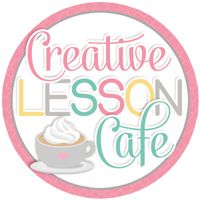It is about a young bunny, Hoppi, who is trying to create his first Easter egg to give to the Easter Rabbit. He sees all of the other bunnies working on their eggs and he can't decide what kind of egg to create. As the story continues, Hoppi chooses to help another forest friend instead of completing his Easter egg artwork. Hoppi's selflessness is eventually rewarded in the end.
The message in this book is so special and the artwork is tremendous. The Easter Egg is exactly what you would expect from Brett.
The Easter Egg can be used for many classroom activities: comprehension, retelling, context clues, inferencing. It inspired us to create out own Hoppi artwork that will be brightening up our classroom for the next few weeks.
Like Hoppi, students decorated their most beautiful egg. They made patterns, illustrations, team logos, and more. After they made their eggs, they put together a simple bunny pattern. Our bunnies are brown to look like Hoppi. (maybe should have went with gray...oh well)
The buns also look adorable in the traditional white. You can even use up some scrapbook paper leftovers decorating the egg.
If you would like a FREE copy of this bunny pattern, click on the picture below. It's a very simple project that is perfect for spring in your classroom. It's always so fun to see how students' personalities shine through in projects like this one.
Thank you so much for stopping by.
Happy Easter!





































































